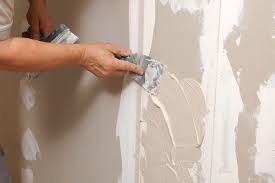We often think about our homes as places of comfort and safety. But what many people don’t realize is that the air inside our homes can be more polluted than the air outside. Dust, allergens, moisture, cooking fumes, pet dander, and chemicals from cleaning products can all build up, especially in tightly sealed, energy-efficient homes. The solution? Ventilation system upgrades that don’t just circulate air but actually improve its quality—and in turn, your health and comfort.
Good ventilation is essential for a healthy, livable home, yet it’s often overlooked. Upgrading your ventilation system is one of the most impactful home improvements you can make, offering benefits that range from better air quality to lower energy bills.
Why Ventilation Matters
Ventilation is about more than just air movement. It’s about replacing stale, polluted indoor air with fresh outdoor air. A good system also controls humidity, reduces odors, and helps remove airborne contaminants.
Key benefits include:
- Healthier Air: Reduces allergens, mold spores, and airborne chemicals.
- Comfort: Keeps air feeling fresh and reduces humidity that causes stuffiness.
- Protection: Prevents moisture buildup that can damage walls, windows, and insulation.
- Energy Efficiency: Helps HVAC systems run more efficiently, saving on heating and cooling costs.
Without proper ventilation, homes can become a breeding ground for mold, and occupants may suffer from headaches, fatigue, or respiratory issues due to poor indoor air quality. Long-term exposure to poor air can even exacerbate chronic conditions like asthma or cardiovascular problems.
Signs Your Home Needs a Ventilation Upgrade
- Lingering odors from cooking, pets, or cleaning.
- Condensation on windows.
- Musty smells, especially in basements or bathrooms.
- High indoor humidity levels.
- Frequent allergy or asthma flare-ups.
If any of these sound familiar, your home may be due for a ventilation overhaul. Another indicator? If your home always feels stuffy or stale, especially after being closed up for the day, your current system may not be doing its job effectively.
Types of Ventilation Systems
Understanding your options is the first step to improving your indoor air.
1. Exhaust Ventilation
Removes stale air from specific areas, like bathrooms or kitchens. Exhaust fans are common, but upgrading to high-efficiency models ensures better performance with less noise. These fans also help quickly clear out humidity after showers or cooking, reducing the risk of mold.
2. Supply Ventilation
Brings fresh air into the home through fans and ducts. These systems pressurize your home, which helps keep outdoor pollutants from entering in unintended ways, like through gaps in windows or doors.
3. Balanced Ventilation
Brings in fresh air while simultaneously exhausting stale air. Heat Recovery Ventilators (HRVs) and Energy Recovery Ventilators (ERVs) are popular choices that also recover heat or moisture to improve efficiency.
- HRVs: Best for colder climates where retaining heat is crucial.
- ERVs: Ideal for humid or mixed climates, balancing humidity and temperature for optimal comfort.
These systems are great for whole-house ventilation and are often integrated with HVAC systems, providing comprehensive air exchange throughout your home.
Benefits of Upgrading to Modern Systems
Modern ventilation systems are designed for quiet, efficient operation and can be customized for your home’s size, layout, and needs. Key benefits include:
- Reduced Allergens: Filters and purifiers trap dust, pollen, and pollutants.
- Humidity Control: Prevents mold, mildew, and warping of wood surfaces.
- Energy Savings: Less strain on HVAC systems and reduced heating/cooling costs.
- Smart Controls: Programmable settings and sensors adjust airflow as needed.
Investing in a modern ventilation upgrade is investing in long-term comfort and health. You’ll likely notice an immediate difference in how your home feels—fresher, lighter, and more breathable.

Practical Upgrades to Consider
- Replace or Upgrade Exhaust Fans: Choose quiet, energy-efficient models for bathrooms and kitchens. Look for fans with humidity sensors for automatic operation.
- Install an HRV or ERV: Ideal for whole-home solutions and improving energy efficiency.
- Add Air Purifiers or Filters: Supplement ventilation with targeted filtration, especially in areas with high dust or allergens.
- Seal Ducts and Improve Insulation: Maximize airflow efficiency and comfort by preventing air leaks.
- Smart Thermostats with Airflow Sensors: Automatically optimize indoor air based on occupancy and air quality levels.
Real-Life Impact: Stories from Homeowners
Homeowners who invest in ventilation upgrades often report better sleep, reduced allergy symptoms, and more energy throughout the day. Many also notice that their homes smell fresher and that cooking odors or pet smells no longer linger for hours.
For families with children or elderly members, improved air quality has been a game-changer. It’s not just about comfort—it’s about health and well-being.
DIY vs. Professional Installation
While some ventilation improvements, like installing new exhaust fans, can be DIY-friendly, whole-house systems and ductwork upgrades are best handled by professionals. They can assess airflow, identify problem areas, and design a system tailored to your home.
Professionals also ensure compliance with building codes, optimal placement for airflow, and offer maintenance plans for long-term performance. Investing in professional help means peace of mind and better results.
Future-Proofing Your Home
With growing awareness around indoor air quality, having a modern ventilation system adds value to your property. Buyers are increasingly seeking homes with energy-efficient and health-conscious features. A ventilation upgrade is not just a personal investment—it’s a smart move for resale value.
Final Thoughts: A Breath of Fresh Air
Your home should be a place where you feel relaxed, healthy, and safe. With a proper ventilation system upgrade, you can transform stale, humid air into a fresh, balanced environment. From improving sleep quality to reducing allergens and energy costs, better ventilation is a gift to yourself and your family.
So if you’re ready to breathe easier, it might be time to explore ventilation solutions that bring comfort, health, and efficiency together in one powerful upgrade. Fresh air isn’t a luxury—it’s a necessity, and with the right system, it’s always within reach.
Invest in the air you breathe—your body and your home will thank you.






